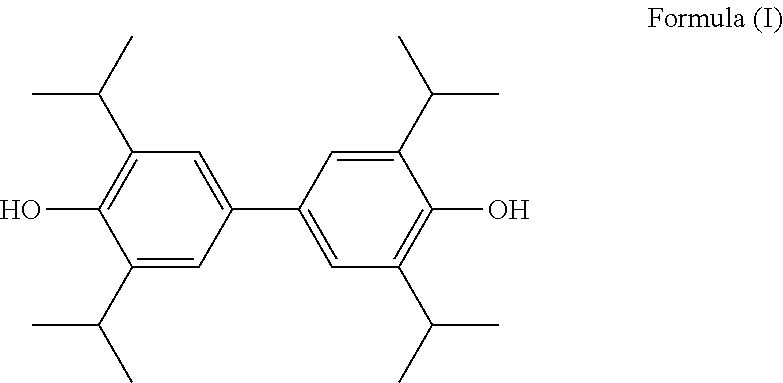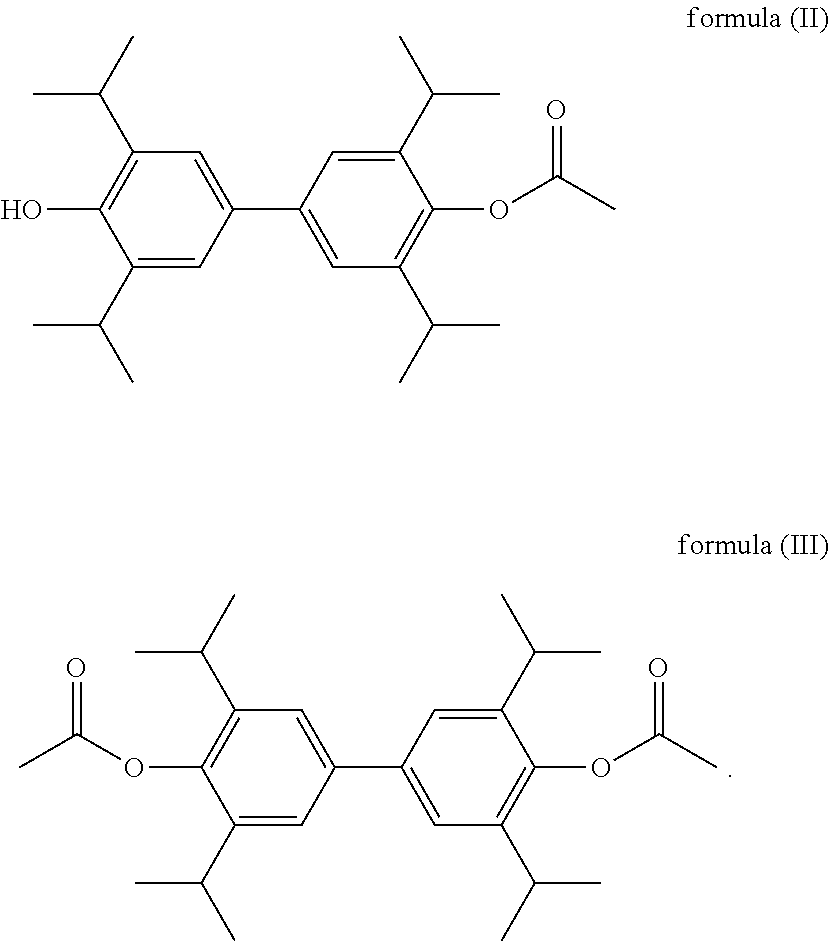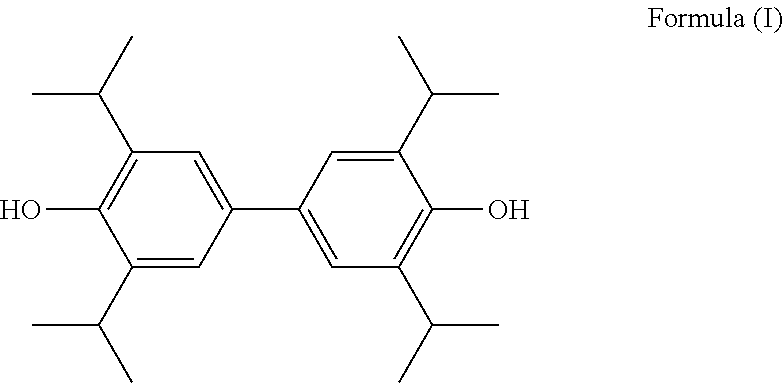The use of diphenol in preparation of medicines for prevention and treatment of cerebral ischemia
- Summary
- Abstract
- Description
- Claims
- Application Information
AI Technical Summary
Benefits of technology
Problems solved by technology
Method used
Image
Examples
example 1
1: 3,3′,5,5′-tetraisopropyl-4,4′-biphenol
[0085]
[0086]20 g propofol was weighed and dissolved in 100 mL ethyl acetate, 24.75 g silver carbonate and 10 g anhydrous magnesium sulfate were then added thereto, stirred at room temperature for 2 h, and the reaction was checked for completion. Water was added to the reaction solution until no bubble emerged. The solid was filtered and washed with ethyl acetate, and the aqueous phase was removed. The ethyl acetate phase was dried over anhydrous sodium sulfate for 1 h and filtered. The filtrate was evaporated to dryness under reduced pressure and washed with anhydrous methanol to give 12.30 g rosy red crystal. 7 g of the above rosy red solid was dissolved in 100 mL of ethyl acetate. Then, 27.66 g sodium hydrosulfite was dissolved in 1 mol / L NaOH and added to the resultant ethyl acetate solution of the above rosy red solid, the mixture was stirred at room temperature for 1.5 h, and the reaction was checked for completion. The ethyl acetate pha...
example 2
2: 4′-hydroxy-3,3′,5,5′-tetraisopropylbiphenyl-4-acetate
[0087]
[0088]4′-Benzyloxy-3,3′,5,5′-tetraisopropylbiphenyl-4-acetate (5 g, 10.27 mmol) was dissolved in 200 mL methanol at room temperature, 10% palladium-carbon (570 mg) was added thereto, followed by evacuation to vacuum and charging with hydrogen, which was repeated for three times, and then sealed and reacted at room temperature for 10 h. The palladium-carbon in the reaction solution was filtered, and the filtrate was evaporated under reduced pressure to obtain 4′-hydroxy-3,3′, 5,5′-tetraisopropylbiphenyl-4-acetate (3.9 g, 95.73%) as a white solid. 1H NMR (300 MHz, CDCl3) δ 7.19 (s, 4H), 4.86 (s, 1H), 3.37-3.32 (m, 4H), 3.16 (s, 3H), 1.20 (d, 24H).
example 3
3: 3,3′,5,5′-tetraisopropylbiphenyl-4′-diacetate
[0089]
[0090]4,4′-dihydroxy-3,3′,5,5′-tetraisopropylbiphenyl (5 g, 14.10 mmol) was added to 30 mL acetic anhydride and allowed to reflux for 3 h under nitrogen. The reaction solution was cooled to room temperature, and the acetic anhydride was removed under reduced pressure. Water (200 mL) was added to the residue to give a white solid which was washed with 10% cold ethanol (100 mL) and water (200 mL) and dried to afford 3,3′,5,5′-tetraisopropylbiphenyl-4′-diacetate (6 g, 95.06%) as a white solid.
[0091]White solid, 1H NMR (300 MHz, CDCl3) δ 7.19 (s, 4H), 2.91-2.89 (m, 4H), 2.32 (s, 6H), 1.19 (d, 24H).
PUM
| Property | Measurement | Unit |
|---|---|---|
| Volume | aaaaa | aaaaa |
| Volume | aaaaa | aaaaa |
| Volume | aaaaa | aaaaa |
Abstract
Description
Claims
Application Information
 Login to view more
Login to view more - R&D Engineer
- R&D Manager
- IP Professional
- Industry Leading Data Capabilities
- Powerful AI technology
- Patent DNA Extraction
Browse by: Latest US Patents, China's latest patents, Technical Efficacy Thesaurus, Application Domain, Technology Topic.
© 2024 PatSnap. All rights reserved.Legal|Privacy policy|Modern Slavery Act Transparency Statement|Sitemap



